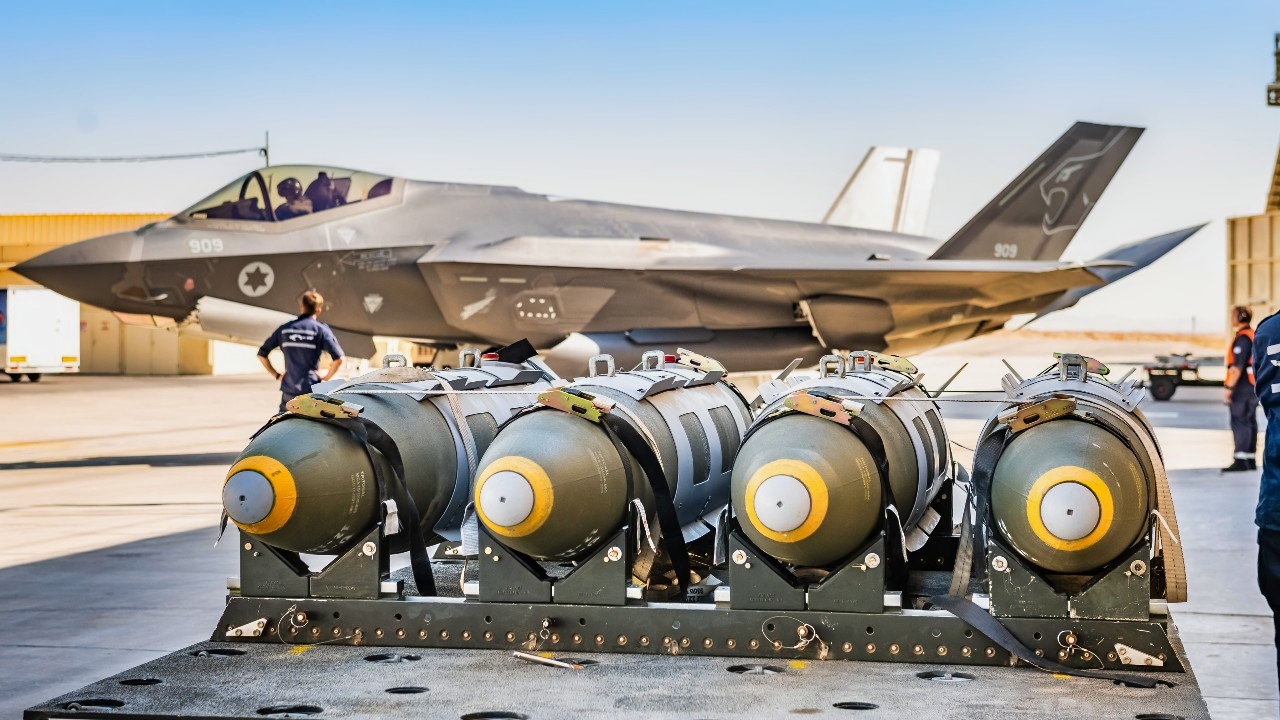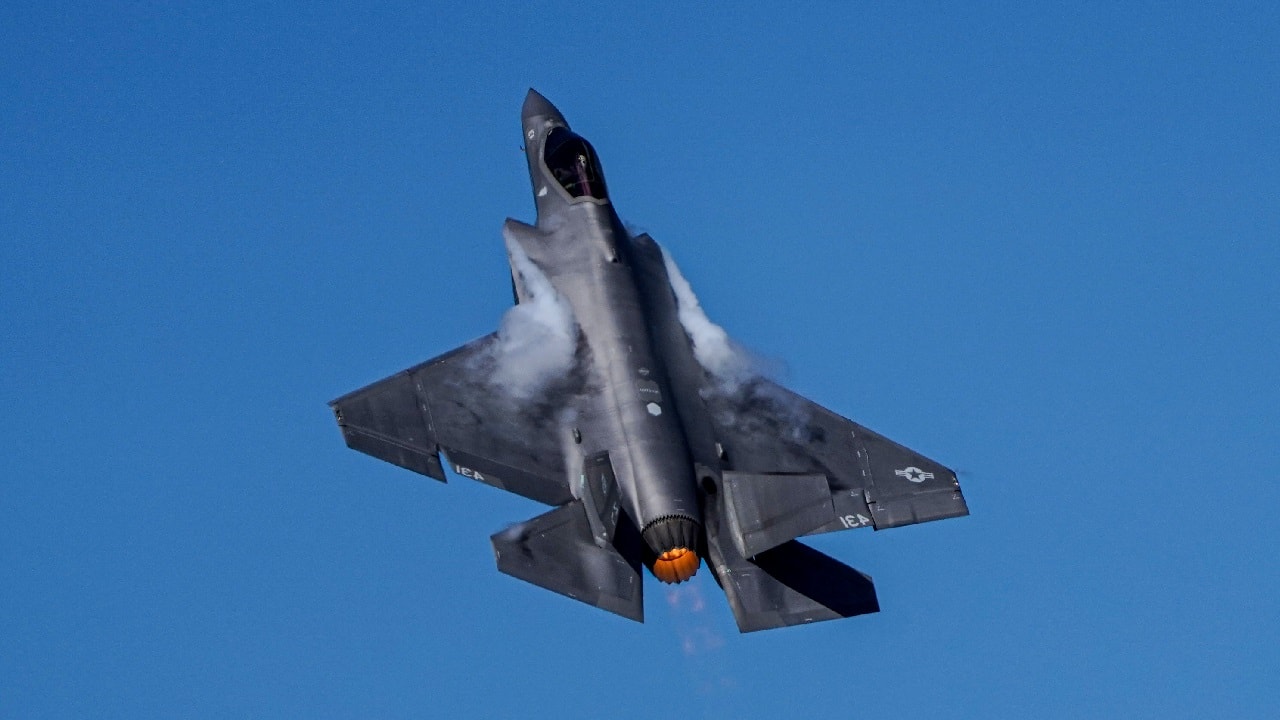Key Points and Summary – A scathing GAO review says the F-35 still “overpromises and underdelivers,” with Block 4 upgrades and the linked TR-3 reset years late and roughly $6 billion over budget.
-Engine-dependent capabilities slip; some are trimmed entirely.
Export headaches mount—Belgium’s jet troubles, Poland’s deliveries pushed to 2026–27, Swiss cost angst, and fresh buyer hesitation—while a “kill switch” rumor lingers despite U.S. denials.
-The program isn’t collapsing: Israel’s F-35I has excelled in combat, and partners remain broadly committed.
-But GAO heat means tougher Hill scrutiny ahead—putting pressure on Lockheed and the Pentagon to fix schedule discipline before delays bite U.S. readiness.
What’s the Latest in F-35 Fighter Struggles?
When a US federal government watchdog growls and bites you, it stings. That’s the latest wound afflicting the F-35 Lightning II program. The US Government Accountability Office (GAO) has some bad news for the F-35’s Block 4 upgrades.
This project is behind schedule and over budget. While supply chains are often cited as the reason, the US defense industrial base, especially Lockheed Martin, must have received the message that the bean counters in Washington are not pleased.
Upgrades Are Tardy, and Future Development Needs to Be Fixed
Defense News reviewed the report from the GAO, titled “F-35 Program: Actions Needed to Address Late Deliveries and Improve Future Development.” Notice that the title emphasizes ‘late deliveries’ and the need for improvement. That’s often a death sentence.
“The F-35 remains critical to our national defense, as well as that of our partners and allies, and is expected to retain critical roles for decades to come,” the report said. “After nearly 20 years of aircraft production, however, the F-35 program continues to overpromise and underdeliver,” Defense News noted.
Is the US Defense Acquisition Process Struggling?
The National Security Journal has written an analysis on how Russia and Vladimir Putin overpromise and underdeliver with their marquee defense programs. Now the GAO is saying the same thing about the F-35.
The Block 4 effort, which aims to upgrade munitions, radars, and sensors, is struggling alongside the other technology reboot project, called Technology Refresh 3. Since the “TR-3” program was delayed, there was a knock-on effect on the Block 4. This has resulted in a $6 billion cost overrun and multiple years of delays.
The upgrade projects were all supposed to be complete by 2026, but that objective will not be met. The entire effort could span into the mid-2030s.
Some Systems Are Green For Go
Engine upgrades are also necessary, and that process is contributing to the delays.
“Block 4 is still on track to deliver improved electronic warfare, weapons, communication, and navigation capabilities, GAO said, but a more detailed list was not available to auditors. Some capabilities, including those that depend on the improved engine, will be delayed, and others struck entirely because they are no longer needed, the report said,” Defense News explained.
F-35 Export Program Is Having Problems
Another F-35 embarrassment is deliveries to Europe. Belgium is concerned that it may not receive its full allotment of Lightning IIs this year. The country has only received three F-35s. The fourth ordered jet was stranded at Lajes Field in Azores, Portugal.
The jet had airworthiness problems and “technical uncertainty.” This was humiliating for Lockheed Martin as new fighters should be ready to rip when they are first sent to allies. This is an inauspicious start, as Belgium has ordered 45 F-35s from Lockheed, so any delays are particularly frustrating.
Poland is also gritting its teeth. There will also be an F-35 delivery delay for the Polish air force. Six F-35s will be pushed back to the third quarter of 2026 instead of the first quarter of 2026. Four others won’t be in-country until 2027.

F-35 Fighter With LRASM Missiles. Image Credit: Lockheed Martin.
Portugal considered buying the F-35, but it “wobbled” as Politico reported, and is now going to pass on a purchase. Portugal is reportedly concerned about President Donald Trump’s occasional reticence to support NATO, which has led to a lack of clarity about American responsibilities to its allies.
Switzerland plans to purchase 35 F-35s, but the cost has increased beyond the original price tag of $6.25 billion. This has become a political albatross, with some Swiss defense policy critics wondering if the investment is worth the money, given U.S. tariffs on Switzerland.
Finally, Canada is undecided about finalizing its deal to purchase 88 F-35s. The agreement is in a lengthy government “review” about whether to honor the commitment, and the Great White North could opt to buy the JAS 39 Gripen or the Eurofighter Typhoon instead.
Is There Really a ‘Kill Switch?’
There is also the so-called “kill switch” bugaboo that seems to be a conspiracy theory, but is a problem for the United States, nonetheless. The rumor circulating in Europe is that the Americans could refuse to update software containing new mission data files and refrain from providing components and spare parts for the F-35, effectively “killing” it without the necessary upgrades.
Lockheed Martin and the Air Force vehemently deny this kind of skullduggery. However, some allies are concerned that Trump could become upset with a F-35 customer and render the Lightning II unusable. It is far-fetched and little more than a rumor, but some Europeans believe that the Americans are always up to mischief and vengeance for perceived political slights.
Despite all of the difficulties, the F-35 is not in its death throes. Israel’s F-35I is likely the best fighter jet in the world, enjoying awesome combat success against Iran and Hamas. The Israelis have not lost an F-35I despite dangerous and complex war missions.

Israel F-35I Adir Stealth Fighter. Image Credit: IAF.

F-35I Adir Fighter from Israel. Image Credit: Creative Commons.
There are 19 mostly satisfied international partners. Yes, there have been delays, but the Europeans can wait even if they are annoyed.
The GAO report, however, is most troubling because billions of dollars in cost overruns and many years of schedule slips have hurt U.S. readiness and combat preparations at a time when Russia and China are becoming increasingly belligerent.
The F-35 has endured more than its share of criticism over the years, yet it remains one of the best combat aircraft in existence.
Be cautious of the GAO, though. These watchdogs have a way of alerting Congress.
That means Air Force generals and Lockheed executives could spend a painful day or two testifying before lawmakers on Capitol Hill, and the representatives and senators will not accept excuses for all the problems without pushback and some harsh words.
This should spur Lockheed into action, and maybe Trump will play nicer with NATO allies to keep the F-35 deals coming.
About the Author: Brent M. Eastwood
Brent M. Eastwood, PhD is the author of Don’t Turn Your Back On the World: a Conservative Foreign Policy and Humans, Machines, and Data: Future Trends in Warfare, plus two other books. Brent was the founder and CEO of a tech firm that predicted world events using artificial intelligence. He served as a legislative fellow for US Senator Tim Scott and advised the senator on defense and foreign policy issues. He has taught at American University, George Washington University, and George Mason University. Brent is a former US Army Infantry officer. He can be followed on X @BMEastwood.
More Military
Europe’s New 6th Generation GCAP Stealth Fighter Looks Unaffordable
49 ‘New’ M1A1 Abrams Tanks Were Sent to Ukraine by Australia and America Doesn’t Approve
The U.S. Marine Corps Is Facing a Tough Drone Reality
‘300 Percent More Lethal’: The U.S. Army Is Putting China and Russia on Notice











Oleg Olkha
November 10, 2025 at 3:29 pm
Israel does not need Block 4 and is moving forward on its own to upgrade munitions, sensors and software. The “problems” mentioned have nothing to do with on actual combat use when necessary. Regards…
Scott Moser
November 10, 2025 at 6:40 pm
The F-35 outclasses anything flown by Russia or China, and that is often behind these stories about its problems. Our adversaries would love to face fewer F-35s in the real world. The reality is that all complex weapons systems over promise, and have cost overruns. That is the nature of post-WWII defense programs. The procurement cost of the F-35A is equivalent to many advanced Gen 4.5 fighters, while being a much more capable platform. Israel wouldn’t have increased their order by 50% otherwise.